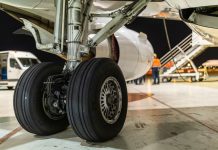In our last article in this section dedicated to those who always find themselves asking, “How is that done?”, we talked about ACP125 and ICAO, the past and present conventional languages used in airline communications. We received a lot of interest from our readers.
So here we are again opening up the reinforced doors of cockpits* and control towers to learn about the codes and phonetic alphabet that allow pilots to communicate quickly, directly and without misunderstandings.
Let’s start with flight numbers, which you’ll also find on your ticket. Let’s take the example of AirDolomiti flight EN1234. In response to a “Radio Check” request, reporting the quality of reception, a pilot will say “AIRDOLOMITI ONE, TWO, THREE, FOUR”. Whoever is listening to the radio transmission might answer with the command “Read Back” or “Say Again”, in order to obtain confirmation of correct reception, or “Speak Slower”, a request to reduce the speed of speech.

“Roger” means that the message has been received and understood, while “Disregard” requires that the recipient ignore the previous transmission and mustn’t be confused with “Cancel” which annuls the previously transmitted clearance.
It may seem very complicated, but can you imagine how chaotic communication between pilots and air traffic controllers who speak different languages would be otherwise?
There are also some acronyms that help to quickly indicate terms common to all civil aviation aeroplanes, such as ETA and ETD (Estimated Time of Arrival and Estimated Time of Departure), PAX referring to passengers, F/A (Flight Attendants), F/O (First Officers) and Cpt (Captains). These last three categories represent the Crew On-Duty.
When cockpit colleagues are indicating the position of two aircrafts they refer to the clock face. An aircraft at 3 o’clock would be to the right of the first one, one at 9 o’clock would be to the left, at 12 o’clock in front, at 6 o’clock behind, whilst 7 o’clock would be behind but diagonally to the left… I’ll leave it to you to figure out all the other time combinations!
* By the way, do you know how the doors of a cockpit work? If not, keep following us!




